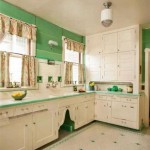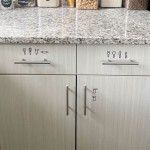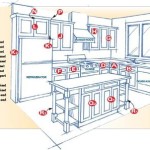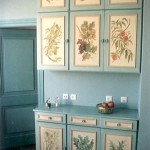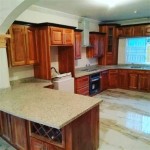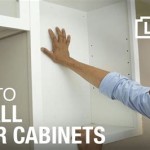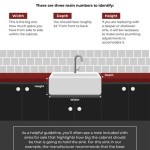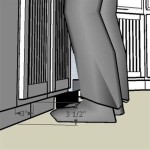```html
Rope Lighting For Under Kitchen Cabinets
Rope lighting has become a popular choice for under-cabinet illumination in kitchens, offering a blend of functionality and aesthetics. This type of lighting provides task lighting for food preparation areas and adds a subtle ambient glow that enhances the overall atmosphere of the kitchen. This article explores the various aspects of using rope lighting for under kitchen cabinets, including its benefits, installation considerations, different types available, and factors to consider when choosing the right rope light for a specific kitchen setup.
Under-cabinet lighting, in general, addresses several key issues in kitchen design. First, it eliminates shadows cast by overhead lighting, creating a well-lit workspace for chopping, mixing, and other culinary activities. Second, it adds a layer of visual warmth to the kitchen, moving beyond purely functional lighting to contribute to the room's overall ambiance. Finally, well-placed under-cabinet lighting can highlight the countertop surfaces and backsplash, showcasing the textures and colors of these design elements. While various lighting options exist, rope lighting offers a unique combination of flexibility, ease of installation, and affordability, making it a compelling choice for many homeowners.
Benefits of Using Rope Lighting Under Kitchen Cabinets
Rope lighting presents several advantages over other under-cabinet lighting solutions. These benefits include its flexible design, energy efficiency, ease of installation, and relatively low cost. Understanding these advantages can help determine if rope lighting is the optimal choice for a particular kitchen lighting project.
Flexibility and Adaptability: One of the primary benefits of rope lighting is its flexibility. The pliable nature of the rope allows it to be easily bent and contoured to fit the specific dimensions and angles of under-cabinet spaces. This is particularly useful in kitchens with irregular cabinet shapes or corner installations. Rope lighting can be cut to specific lengths, further customizing the installation and minimizing wasted material. This adaptability makes it a versatile solution for a wide range of kitchen designs.
Energy Efficiency: Modern rope lighting predominantly utilizes LED (Light Emitting Diode) technology. LEDs are significantly more energy-efficient than traditional incandescent or halogen bulbs, consuming considerably less electricity to produce the same amount of light. This translates to lower energy bills and reduced environmental impact. The long lifespan of LEDs is another significant advantage, as they require less frequent replacement compared to other lighting types, reducing maintenance efforts and costs. The energy efficiency of LED rope lighting contributes to its overall cost-effectiveness over the long term.
Ease of Installation: Installing rope lighting under kitchen cabinets is generally a straightforward process that can be accomplished by a homeowner with basic DIY skills. Most rope lighting kits come with mounting clips or adhesive backing, allowing for simple attachment to the underside of the cabinets. Minimal wiring is typically required, often involving simply plugging the rope light into a standard electrical outlet or connecting it to a low-voltage power supply. The ease of installation makes rope lighting an accessible option for those seeking to upgrade their kitchen lighting without the need for professional electrical work. However, it's always recommended to consult with a qualified electrician if there are any concerns regarding electrical safety or wiring complexities.
Cost-Effectiveness: Compared to other under-cabinet lighting options, such as puck lights or linear LED fixtures, rope lighting is generally a more affordable solution. The initial cost of the rope light itself is typically lower, and the relatively simple installation process can save on professional installation fees. The long lifespan and energy efficiency of LED rope lighting further contribute to its overall cost-effectiveness by reducing replacement costs and energy consumption over time. This combination of factors makes rope lighting an attractive option for budget-conscious homeowners seeking to improve their kitchen lighting.
Types of Rope Lighting Available
Several types of rope lighting are available, each with its own characteristics and applications. The most common types include incandescent, LED, and fiber optic rope lights. Understanding the differences between these types is essential for selecting the appropriate option for a specific under-cabinet lighting project.
Incandescent Rope Lighting: Incandescent rope lighting was the original type of rope lighting and is characterized by its warm, yellowish light output. While it is generally the least expensive option, it is also the least energy-efficient and has the shortest lifespan compared to LED and fiber optic options. Incandescent rope lighting consumes significantly more electricity and generates more heat, making it less desirable for long-term use and potentially posing a fire hazard if not properly installed and maintained. Due to its inefficiencies and safety concerns, incandescent rope lighting is becoming less common and is often superseded by more modern and efficient alternatives.
LED Rope Lighting: LED rope lighting is the most popular and widely used type of rope lighting today. As previously mentioned, LEDs are highly energy-efficient, have a long lifespan, and produce minimal heat. LED rope lighting is available in a wide range of colors, including white (in various color temperatures, such as warm white, cool white, and daylight), as well as single colors and color-changing options. The color temperature of white LED rope lighting can significantly impact the ambiance of the kitchen, with warmer temperatures creating a cozy and inviting feel, while cooler temperatures provide a more modern and task-oriented illumination. The versatility and efficiency of LED rope lighting make it the preferred choice for most under-cabinet lighting applications.
Fiber Optic Rope Lighting: Fiber optic rope lighting utilizes a light source (typically a halogen or LED bulb) that transmits light through optical fibers encased in a protective sleeve. While fiber optic rope lighting offers a unique and visually appealing effect, it is generally less common for under-cabinet lighting applications due to its higher cost and more complex installation requirements. Fiber optic rope lighting typically requires a separate light source and may require specialized connectors and tools. The light output of fiber optic rope lighting can also be less intense compared to LED options, making it less suitable for task lighting but potentially suitable for purely decorative purposes.
Factors to Consider When Choosing Rope Lighting
Selecting the right rope lighting for under kitchen cabinets involves considering several key factors, including the desired brightness and color temperature, the length and placement of the lighting, the power source and wiring requirements, and any safety certifications or ratings. Careful consideration of these factors will ensure a successful and aesthetically pleasing under-cabinet lighting installation.
Brightness and Color Temperature: The desired brightness of the rope lighting will depend on the primary purpose of the lighting. If the primary goal is to provide task lighting for food preparation, a brighter rope light with a higher lumen output will be necessary. If the goal is to create a subtle ambient glow, a dimmer rope light will suffice. The color temperature of the light, measured in Kelvin (K), also plays a crucial role in the overall ambiance of the kitchen. Warmer color temperatures (2700K-3000K) create a cozy and inviting atmosphere, while cooler color temperatures (4000K-5000K) provide a more modern and task-oriented illumination. The choice of color temperature should complement the existing lighting and decor of the kitchen.
Length and Placement: Accurate measurement of the under-cabinet space is essential for determining the required length of the rope lighting. It is generally advisable to purchase slightly more rope lighting than needed, as it can be easily cut to size. The placement of the rope lighting should be carefully considered to ensure even and consistent illumination across the countertop. Mounting the rope lighting towards the front of the cabinet will provide the most direct light on the work surface, while mounting it further back will create a more diffused and ambient glow. The mounting location should also take into account the visibility of the rope lighting from different vantage points in the kitchen, aiming to conceal the light source while maximizing its illumination.
Power Source and Wiring: Most rope lighting operates on either standard 120V AC power or low-voltage DC power (typically 12V or 24V). 120V rope lighting can be plugged directly into a standard electrical outlet, while low-voltage rope lighting requires a transformer or power supply to convert the AC power to the appropriate DC voltage. If installing low-voltage rope lighting, it is important to choose a power supply with sufficient wattage to power the entire length of the rope light. The wiring should be properly concealed and secured to prevent tripping hazards or damage to the wiring. If any wiring modifications are required, it is highly recommended to consult with a qualified electrician to ensure safety and compliance with local electrical codes.
Safety Certifications and Ratings: When selecting rope lighting, it is important to choose products that have been tested and certified by reputable organizations, such as UL (Underwriters Laboratories) or ETL (Electrical Testing Laboratories). These certifications indicate that the product has met certain safety standards and has been evaluated for its performance and reliability. Look for rope lighting that is specifically rated for indoor use and that has appropriate protection against moisture and dust. The IP (Ingress Protection) rating indicates the level of protection against solid objects and liquids. For under-cabinet lighting, an IP rating of IP44 or higher is recommended to protect against splashes and spills.
```
Diy Kitchen Moodlighting Hometalk

5 Ways To Use Rope Lights At Home

Light Up Your Cabinets With Rope Lights

Kitchen Inspiration Under Cabinet Lighting The Lark

Lights And More Is Now Sugarloaf Lighting Diy Backsplash Kitchen Cabinet Molding Under

Here S An Easy Way To Light Up Your Kitchen At Night And It Only Takes 30 Minutes Rope Portable Island Diy

Kitchen Inspiration Under Cabinet Lighting The Lark

Led Rope Lights Above Cabinetry Crown Molding Kitchen Cabinets Lighting

High Lumen Cob Led Strip Light Dot Free 16 Ft Flexible 2700k Rope Suitable For Bedroom Stage Home Cabinet Kitchen Diy Lighting China 24v Rgb

What You Need To Know About Under Cabinet Lighting

